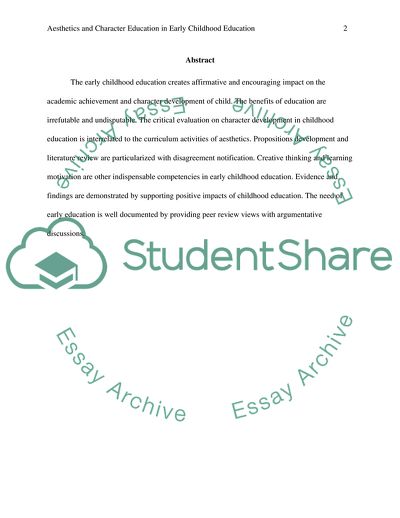Cite this document
(Aesthetics and Character Education in Early Childhood Education Coursework Example | Topics and Well Written Essays - 3750 words, n.d.)
Aesthetics and Character Education in Early Childhood Education Coursework Example | Topics and Well Written Essays - 3750 words. https://studentshare.org/education/1832189-aesthetics-and-character-education-in-early-childhood-education
Aesthetics and Character Education in Early Childhood Education Coursework Example | Topics and Well Written Essays - 3750 words. https://studentshare.org/education/1832189-aesthetics-and-character-education-in-early-childhood-education
(Aesthetics and Character Education in Early Childhood Education Coursework Example | Topics and Well Written Essays - 3750 Words)
Aesthetics and Character Education in Early Childhood Education Coursework Example | Topics and Well Written Essays - 3750 Words. https://studentshare.org/education/1832189-aesthetics-and-character-education-in-early-childhood-education.
Aesthetics and Character Education in Early Childhood Education Coursework Example | Topics and Well Written Essays - 3750 Words. https://studentshare.org/education/1832189-aesthetics-and-character-education-in-early-childhood-education.
“Aesthetics and Character Education in Early Childhood Education Coursework Example | Topics and Well Written Essays - 3750 Words”. https://studentshare.org/education/1832189-aesthetics-and-character-education-in-early-childhood-education.


